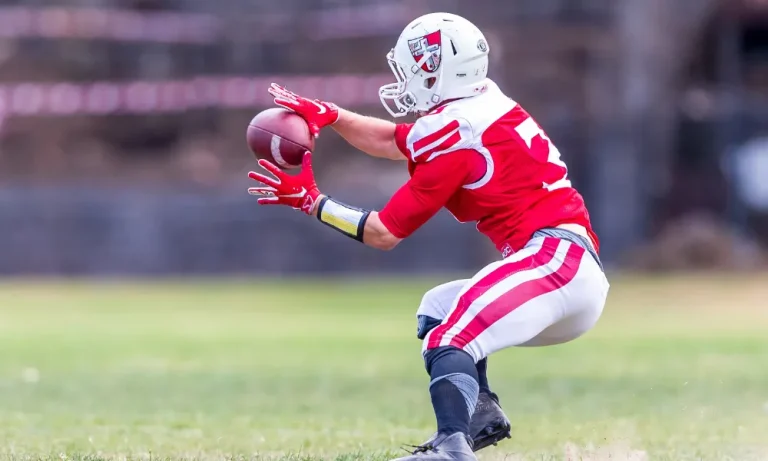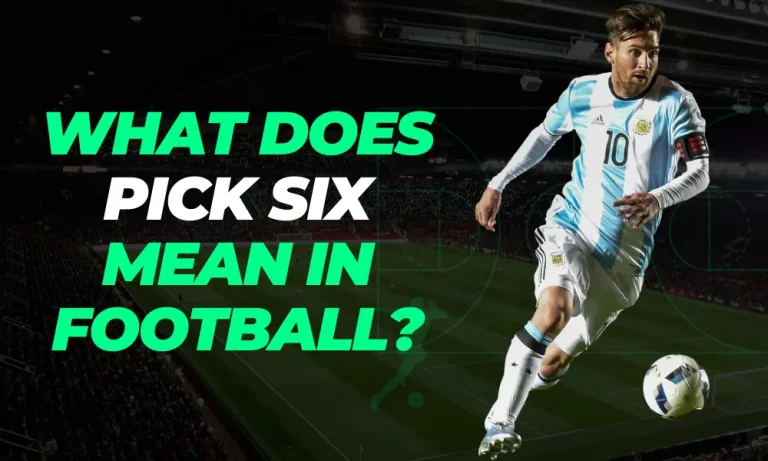What is a Blitz in American Football?
Do you ever wonder what makes American football such an exhilarating sport? One of the secrets lies in the strategic plays employed by teams, especially the infamous “blitz.” So, what is a blitz in American football? In simple terms, it’s a defensive strategy that aims to apply intense pressure on the opposing team’s quarterback. But there’s more to it than meets the eye. In this article, we’ll explore the intricacies of the blitz, its evolution, various types, execution techniques, and even how offenses counteract it. Get ready to dive into the captivating world of the blitz in American football!
What is a Blitz?
In American football, a blitz refers to a defensive strategy designed to apply additional pressure on the opposing team’s quarterback. The purpose of a blitz is to disrupt the offensive rhythm and create chaos for the offense.
A blitz involves sending more defenders than usual towards the quarterback, with the aim of overwhelming the offensive line and forcing the quarterback to make quick decisions under immense pressure. By doing so, the defense hopes to increase the chances of sacking the quarterback or forcing him into making mistakes such as throwing incomplete passes or interceptions.
The blitz is a calculated risk that requires precise timing and coordination among the defensive players. It is often used as a surprise tactic to catch the offense off guard and disrupt their planned plays. By blitzing, the defense aims to disrupt the opposing team’s offensive rhythm, prevent the quarterback from finding open receivers, and create opportunities for turnovers.
Evolution of the Blitz
The evolution of the blitz in American football has been a fascinating journey. It traces back to the early days of the sport when coaches and players began experimenting with different defensive strategies. However, it was not until the mid-20th century that the blitz gained prominence.
One of the key innovators in the development of the blitz was Tom Landry, the legendary coach of the Dallas Cowboys. Landry revolutionized defensive tactics by introducing complex formations and disguised blitz packages. His contributions to the game’s defensive strategies laid the foundation for the modern blitz.
Over time, the blitz has evolved to adapt to changes in the game. As offenses became more sophisticated and quarterbacks developed quicker release times, defenses had to find new ways to generate pressure. This led to the emergence of various types of blitzes, including zone blitzes and safety blitzes, which added an element of surprise and versatility to the defensive playbook.
Why Do Teams Use the Blitz?
Teams often opt for the blitz strategy in American football for several reasons. Firstly, the blitz can create chaos and confusion for the offense. By sending extra defenders towards the quarterback, the defense puts immense pressure on the offensive line and disrupts their blocking assignments. This forces the quarterback to make quick decisions under duress, increasing the chances of mistakes and turnovers.
Another reason teams use the blitz is to increase the likelihood of getting sacks. By overwhelming the offensive line with more pass rushers, the defense can create favorable matchups and exploit weaknesses in protection schemes. This can lead to more opportunities for sacking the quarterback, which can significantly impact the outcome of the game.
Additionally, the blitz strategy can help in generating turnovers. When the quarterback is under constant pressure, he may rush his throws or make inaccurate passes, increasing the chances of interceptions. Furthermore, the disruption caused by the blitz can force fumbles or create opportunities for quick-thinking defenders to make big plays and recover the ball.
Types of Blitzes
In American football, there are various types of blitzes that teams commonly use to apply pressure on the offense. One type is the “corner blitz,” where a defensive back, typically a cornerback, rushes from the edge towards the quarterback. The objective of this blitz is to surprise the offense and disrupt the passing game by forcing the quarterback to make hurried decisions.
Another type of blitz is the “inside linebacker blitz.” In this blitz, one or both inside linebackers attack the gaps in the offensive line to put pressure on the quarterback. The objective is to collapse the pocket and prevent the quarterback from comfortably stepping up to throw. This type of blitz is effective against offenses that rely heavily on intermediate passes and quick throws.
A popular and effective blitz is the “safety blitz.” Here, a safety, who is usually positioned deep in coverage, is sent on a blitz to catch the offense off guard. The objective is to create confusion and disrupt the timing of the offense. This blitz can be particularly effective against offenses that heavily rely on pass protection schemes, as it forces the offensive line to adjust quickly.
Different types of blitzes are effective in specific scenarios. For example, a corner blitz can be highly effective on third-and-long situations when the offense expects a pass. On the other hand, an inside linebacker blitz can be effective against offenses that heavily rely on running plays. A safety blitz can catch the offense off guard in early downs when they may not anticipate a blitz.
Blitzing Techniques and Execution
During a blitz, defensive players employ various techniques to effectively pressure the quarterback. One common technique is the “speed rush,” where pass rushers use their quickness and agility to beat offensive linemen around the edge. This technique aims to create a direct path to the quarterback, forcing him to make hasty decisions.
Another technique is the “bull rush,” where defenders use their strength and power to overpower offensive linemen and drive them backward. This technique is effective in collapsing the pocket and disrupting the passing lanes, making it challenging for the quarterback to find open receivers.
Communication and coordination among teammates are crucial for successful blitz execution. Defenders must communicate their assignments and responsibilities to ensure everyone is on the same page. This allows them to effectively time their rushes, maintain proper gap integrity, and prevent breakdowns in coverage.
Additionally, key factors that contribute to successful blitz execution include timing, disguise, and disciplined execution. Timing is crucial to catch the offense off guard and exploit vulnerabilities in their protection schemes. Disguise involves concealing the intention to blitz until the last moment, preventing the offense from adjusting their blocking assignments. Finally, disciplined execution ensures that each defender fulfills their role and maintains proper technique, minimizing gaps in the defense.
Counteracting the Blitz
When facing a blitz, offensive teams have several strategies at their disposal to counteract the aggressive defensive approach. One effective method is the “hot route,” where receivers adjust their routes to shorter, quicker options to provide the quarterback with an immediate target. This allows the offense to exploit the areas vacated by blitzing defenders.
Quarterbacks play a crucial role in reading and reacting to the blitz. They must quickly identify the blitzing defenders by recognizing pre-snap cues and post-snap movement. By assessing the defense, quarterbacks can make audibles at the line of scrimmage or change the protection scheme to ensure proper blocking assignments and create opportunities for successful plays.
Proper offensive line protection is vital in countering the blitz. Offensive linemen must communicate effectively to pick up the blitzing defenders and maintain a strong pocket for the quarterback. Techniques such as sliding protections or utilizing double teams on key pass rushers can help neutralize the blitz and give the quarterback enough time to make decisions.
Quick decision-making is also crucial for the offense when facing a blitz. The quarterback must process information rapidly and make accurate reads to find the open receiver or exploit the voids in the defense. This requires a combination of mental agility, anticipation, and trust in the offensive game plan.
Famous Blitzes in Football History
Football history is filled with notable examples of famous blitzes that have left a lasting impact on the game. One such example is the “46 Defense” employed by the 1985 Chicago Bears. This aggressive blitzing scheme overwhelmed opponents, leading the Bears to a dominant Super Bowl victory. The 46 Defense showcased the effectiveness of strategic blitzing and its ability to disrupt opposing offenses.
Another memorable blitz occurred in Super Bowl XLII when the New York Giants unleashed a relentless pass rush against the undefeated New England Patriots. This blitzing strategy, led by players like Michael Strahan and Justin Tuck, resulted in multiple sacks and pressure on Patriots quarterback Tom Brady. The impact of this blitz was significant as it contributed to the Giants’ stunning upset victory and ended the Patriots’ bid for a perfect season.
These famous blitzes have left a lasting legacy in football. They have demonstrated the potential of aggressive defensive strategies to disrupt high-powered offenses and change the course of games. The success of these blitzes has influenced future defensive schemes and strategies, inspiring teams to incorporate similar aggressive approaches to pressure quarterbacks and create turnovers.
FAQs
What is a blitz in American football?
A blitz is a defensive tactic where additional players rush the quarterback in an attempt to disrupt the offense and create pressure.
How does a blitz differ from a regular defensive play?
Unlike a regular defensive play, a blitz involves sending more defenders towards the quarterback, increasing the chances of sacking the quarterback or forcing a quick, rushed throw.
What are the advantages of using a blitz?
The advantages of a blitz include putting pressure on the quarterback, disrupting the offense’s timing, creating turnovers, and potentially sacking the quarterback.
What are the risks of employing a blitz?
Employing a blitz can leave the defense vulnerable to big plays if the blitz is not executed effectively, as it can create open spaces in the secondary for receivers to exploit.
How do teams decide when to use a blitz?
Teams decide when to use a blitz based on factors such as the offensive formation, down and distance, game situation, and the strengths and weaknesses of the opposing offense.
Conclusion
The blitz is an integral part of American football that adds excitement and unpredictability to the game. We’ve uncovered the essence of the blitz, from its definition and historical development to its execution techniques and counteracting strategies. Understanding the significance of the blitz allows us to appreciate the strategic minds behind this complex defensive approach. So, next time you watch a game, keep an eye out for those blitzing defenders and marvel at the chaos they create. If you want to delve deeper into the world of the blitz, keep exploring and expanding your knowledge of this fascinating defensive strategy.





